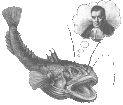UW Aquatic & Fishery Sciences Quantitative Seminar
Trevor Branch
University of Washington, School of Aquatic and Fisheries Science
The allure, utility, and futility of fisheries catches
Abstract
Catches are the most widely available of all fisheries data, and are essential components of fisheries stock assessment and management. Since 1950, the UN Food and Agriculture Organization (FAO) has collected global catches by species and area, forming the basis of key research papers documenting the impact of fisheries. However, the allure of these easily available catch data has also led to futile attempts to infer the underlying biomass trends that correspond to catch time series. These attempts include the basis of fishing down marine food webs, the projection that all fisheries will be collapsed by 2048, the food provision portion of the Ocean Health Index, and catch status plots that attempt to estimate trends in the global status of fish stocks. Simple simulation models of fish biomass and fisheries effort demonstrate the fatal flaws inherent in each of these methods. The over-interpretation of catch trends dates back to the 1800s when it was replaced by CPUE analyses, pioneered by Garstand (1900). Reverting back to catch-only analyses in essence ignores the last 114 years of fisheries research. The general conclusion remains that without trends in abundance, depletion estimates, or catch-per-unit-effort (CPUE) data, it is impossible to interpret annual catch trends.

